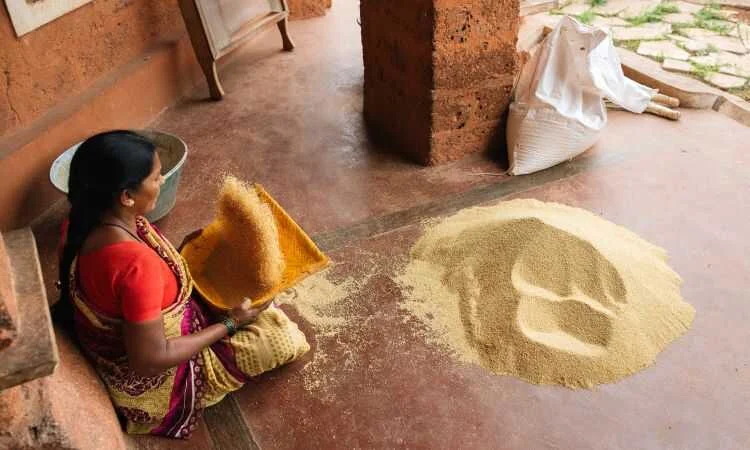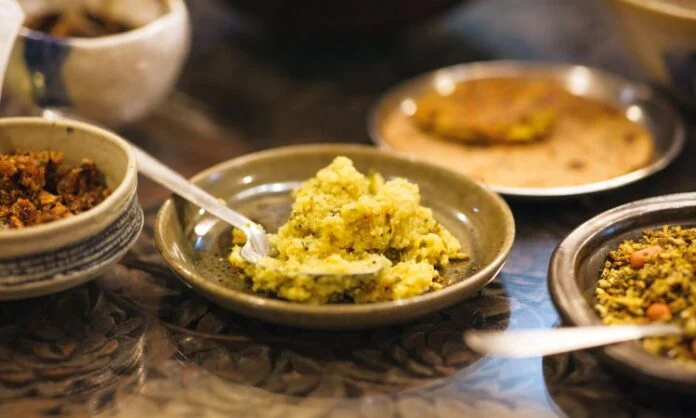In rural India, where agriculture sustains millions, a surprising paradox exists—protein deficiency remains widespread, even in households that sufficiently produce or have access to protein-rich foods.
A new study published by scientists at the International Crops Research Institute for the Semi-Arid Tropics (ICRISAT), the International Food Policy Research Institute (IFPRI), and the Center for Economic and Social Studies (CESS) highlights this alarming reality: more than two-thirds of households surveyed across India’s semi-arid tropics consume less protein than recommended despite sufficient availability of protein sources such as legumes, dairy, and livestock products.
Also Read: ICRISAT ties up with Assam govt for climate-resilient millet farming
Conducted across six states and nine districts, the study found that diets in these regions rely heavily on staple grains like rice and wheat, which contribute 60–75% of daily protein intake. While these foods provide some protein, they lack the essential amino acids necessary for balanced nutrition.

Meanwhile, protein-rich foods such as pulses, dairy, eggs, and meat remain underutilized, not necessarily because they are scarce, but due to a mix of cultural food preferences, limited nutritional awareness, and financial constraints. In only a small fraction of households, inadequate protein intake may be attributed to a lack of availability and affordability.
Also Read: ICRISAT, IOPEPC team up to boost India’s oilseeds production
One of the study’s most striking findings is that protein deficiency was not limited to low-income households. Even wealthier families, who can afford diverse diets, often fail to meet recommended protein intake levels.
This challenges the common assumption that food insecurity is purely an issue of affordability. Instead, the research highlights how deeply ingrained dietary habits, coupled with a lack of understanding about the importance of protein-rich foods, perpetuate malnutrition.
Also Read: Junk & unhealthy food affect quality of deep sleep: Study
Beyond Calories: How Education and Policy Can Reshape Diets in Rural India
Another crucial factor influencing protein intake is women’s role in household decision-making. The study found that households where women had higher levels of education were more likely to consume a balanced diet.
Educated women were better equipped to make informed food choices and prioritized nutrition for their families. This finding reinforces the need to invest in female education and empowerment as a strategy for improving household nutrition.
Also Read: Agri ministry seeks corporates’ help for branding, export of millet
The researchers also examined the role of government policies in shaping dietary patterns. India’s Public Distribution System (PDS), which provides subsidized food grains to two-thirds of the country’s population, has been successful in improving calorie intake. However, it has inadvertently reinforced a diet dominated by cereals while failing to provide sufficient protein-rich options.
The study revealed that access to PDS food grains positively impacted protein intake, underscoring the system’s importance. Thus, researchers recommend increasing the inclusion of pulses, millets, and other protein-dense foods in government food programs to significantly improve nutritional outcomes.
Also Read: India’s foodgrain production estimated to go record high this year
This recommendation aligns with the Government of India’s Union Budget for 2025-26, which prioritizes enhancing pulse production to ensure food and nutritional security.
Another key finding of the study is that the factors that influenced households’ protein consumption varied across districts and states. Thus, region-specific strategies would be needed to promote balanced nutritional intake.
Shalander Kumar, the study’s lead researcher and deputy global research program director of the Enabling Systems Transformation Program at ICRISAT, emphasized that while India has made significant strides in food production, simply increasing the food supply will not address the issue. The study highlights the need for more comprehensive solutions beyond production alone. “Without targeted efforts to promote diverse diets and educate communities on the importance of protein, malnutrition will persist,” noted Dr Kumar.
Also Read: PDS ministry revised norms to boost millet production: Arjun Munda
The researchers call for a multi-pronged approach: integrating nutrition education into public health programs and school curricula, empowering women, improving access to protein-rich foods through government schemes, and encouraging farmers to grow a wider variety of nutrient-dense crops promoting local food systems.
Stanford Blade, Director General-Interim at ICRISAT, emphasized the importance of the findings in addressing India’s nutritional and agricultural challenges. He highlighted ICRISAT’s innovative research and partnerships, which can help deliver higher-yielding, climate-resilient pulse varieties and sustainable farming practices, in support of the Government of India’s thrust toward improved nutrition and self-reliance in pulse and oil seed production.
Also Read: Agri ministry seeks corporates’ help for branding, export of millet
“ICRISAT, with its decades of expertise in pulse breeding and agronomy—particularly in crops like pigeonpea, which India imports in significant quantities—is uniquely positioned to support the Government of India’s national mission to transform the country’s food landscape,” asserted Dr Blade. “We are deeply committed to supporting this vision and working collaboratively to enhance nutrition and agricultural resilience for millions across the country.”




